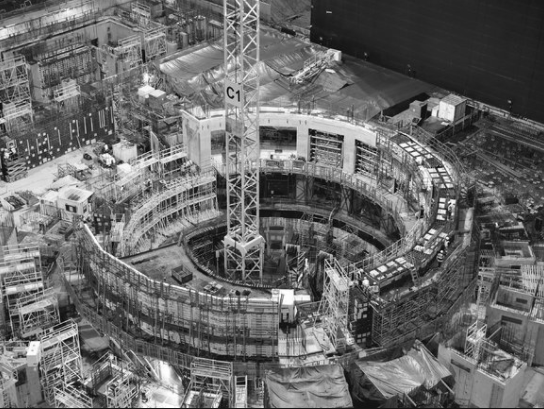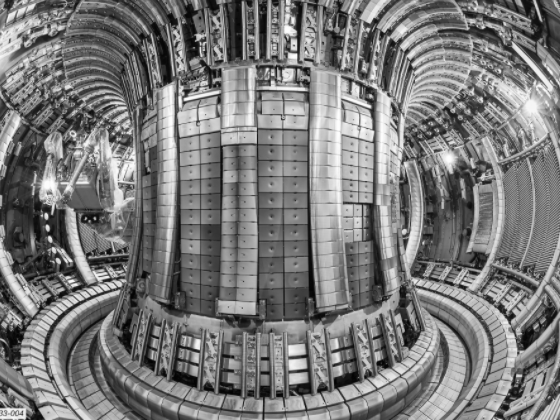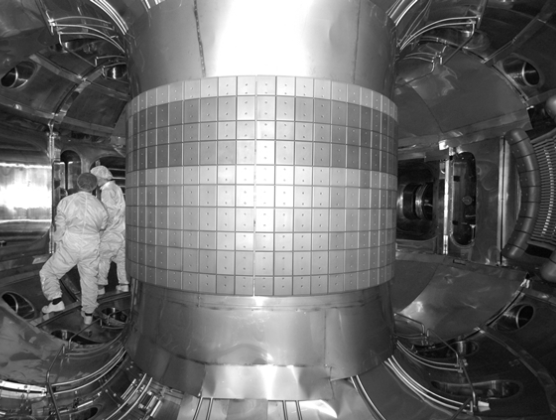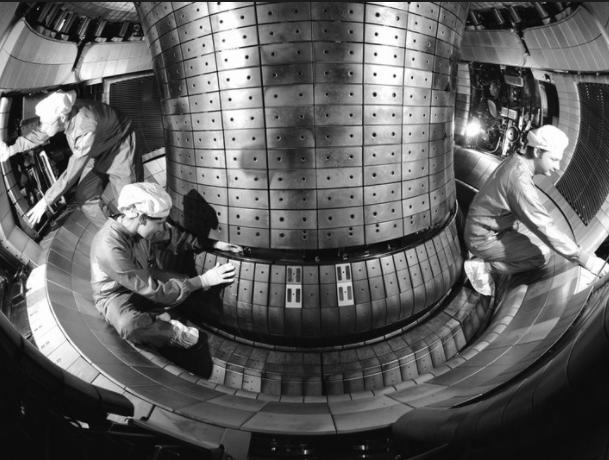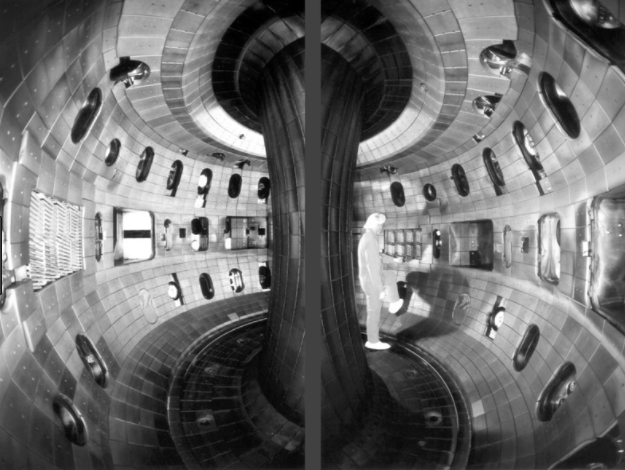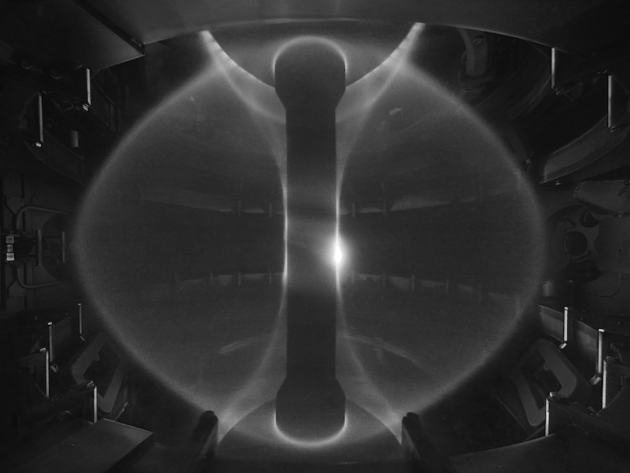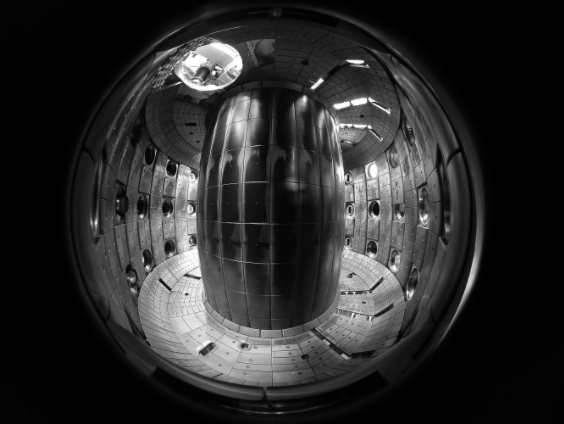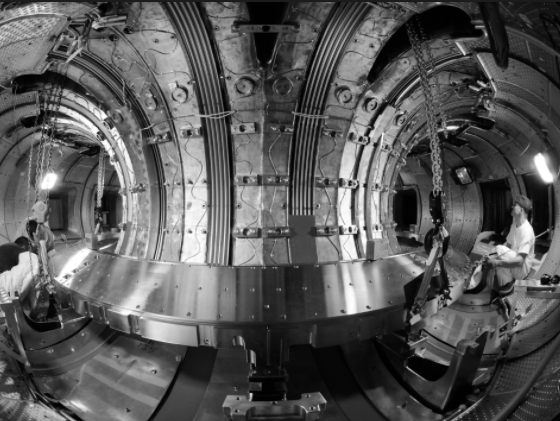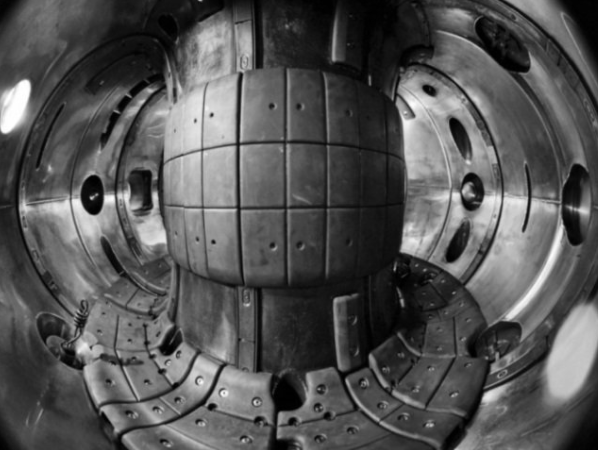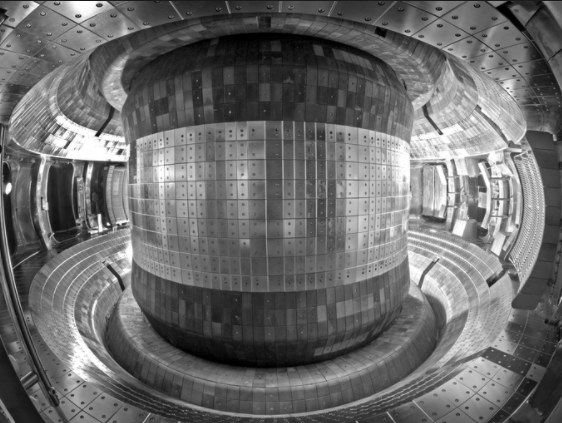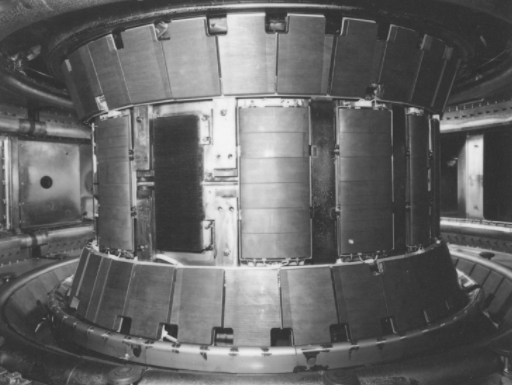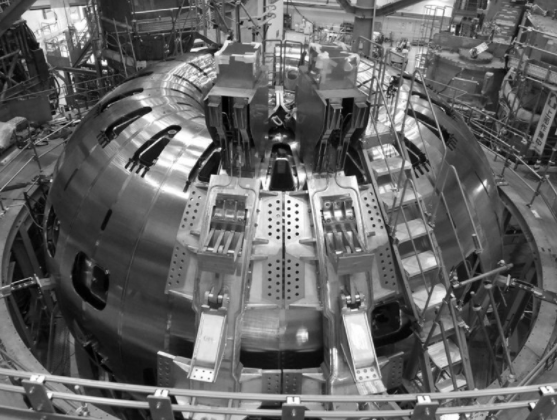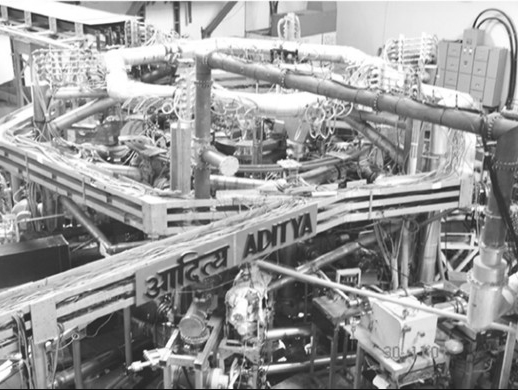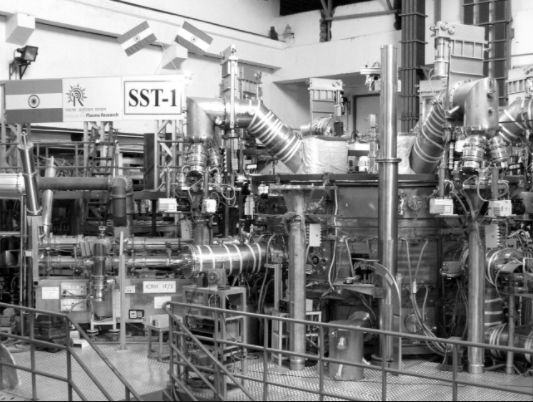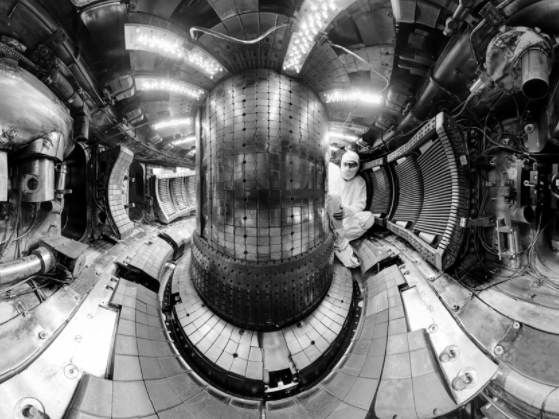
Technology Collaboration Programme on Tokamak Programmes (CTP TCP)

Disclaimer
The CTP TCP also known as the Technology Collaboration Programme on Co-operation on Tokamak Programmes, functions within a framework created by the International Energy Agency (IEA). Views, findings and publications of the CTP TCP do not necessarily represent the views or policies of the IEA Secretariat or of all of its individual member countries
Objective
The objective of this Agreement is to advance toroidal physics and plasma technologies by strengthening cooperation among tokamak programmes, to enhance the effectiveness and productivity of the research and development effort related to the development of the tokamak fusion concept, to contribute to and extend the scientific and technology database of toroidal confinement concepts, and to provide a scientific and technological basis for the successful development of fusion power.
Research activities
The programme consists of scientist exchanges and workshops designed to share information on advances in the following areas:
- Experimental programme plans for the tokamak facilities
- Design and planning of experiments to contribute to the database for the next-generation tokamak devices including, but not limited to, support of activities identified by the International Tokamak Physics Activity (ITPA)
- Experimental, theoretical and technical studies
Members (Contracting Parties)
The members share the work and the research results.
Current members include:
- China: ITER China Domestic Agency
- Europe: European Atomic Treaty – administered by EUROFusion
- India: Institute for Plasma Research
- Japan: National Institutes for Quantum and Radiological Science and Technology
- Korea: National Fusion Research Institute
- United States: United States Department of Energy Office of Fusion Science
- ITER
- Australian Nuclear Science and Technology Organisation (ANSTO)
- Ecole polytechnique fédérale de Lausanne
- The Government of the United Kingdom

Fusion devices coordinated through the CTP TCP
News
Executive Committee meetings
- 2023 :14th CTP Executive Committee Meeting was held at Cadarache (France), 20 December 2023.
- 2022 :13th CTP Executive Committee Meeting was held at Cadarache (France), 8 December 2022.
- 2021 :12th CTP Executive Committee Meeting was held at Cadarache (France), 9 December 2021.
- 2020 :11th CTP Executive Committee Meeting was held at Cadarache (France), 10 December 2020.
- 2019 :10th CTP Executive Committee Meeting was held at Cadarache (France), 12 December 2019.
- 2018 :9th CTP Executive Committee Meeting was held at Cadarache (France), 17 January 2019.
- 2017 :8th CTP Executive Committee Meeting was held at Cadarache (France), 9 November 2017.
- 2016 :7th CTP Executive Committee Meeting was held at Cadarache (France), 8 December 2016.
- 2015 :6th CTP Executive Committee Meeting was held at Cadarache (France), 9 December 2015.
- 2014 :5th CTP Executive Committee Meeting was held at Cadarache (France), 10 December 2014.
- 2013 :4th CTP Executive Committee Meeting was held at Cadarache (France), 11 December 2013.
- 2012 :3rd CTP Executive Committee Meeting was held at Cadarache (France), 12 December 2012.
- 2011 :2nd CTP Executive Committee Meeting was held at Cadarache (France), 15 December 2011.
- 2010 :1st CTP Executive Committee Meeting was held at Cadarache (France), 15-16 December 2010.
Presentations to IEA Committees
- Status Report for FPCC / CERT (18 February, 2016)
- Status Report for FPCC / CERT (25-26 January, 2017)
- Status Report for FPCC / CERT (24-25 January, 2018)
- Status Report for FPCC / CERT (14-15 February, 2019)
- Status Report for FPCC / CERT (12-13 February, 2020)
- Status Report for FPCC / CERT (24-25 February, 2021)
- Status Report for FPCC / CERT (23-24 January, 2022)
- Status Report for FPCC / CERT (15-16 February, 2023)
- Status Report for FPCC / CERT (24-25 January 2024)
New members
- 22 January 2024 : Participation of the Government of the United Kingdom as a Contracting Party the CTP IA became effective as of 22 January 2024.
- 17 October 2022 : Participation of the Ecole polytechnique fédérale de Lausanne as a Contracting Party in the CTP IA became effective as of 17 October 2022.
- 7 June 2018 : Participation of Australia’s Nuclear Science and Technology Organisation (ANSTO) as a Contracting Party in the CTP IA became effective as of 7 June 2018.
- 16 January 2013 : Participation of ITER China Domestic Agency (CNDA) as a Contracting Party in the CTP IA became effective as of 16 January 2013.
- 20 October 2012 : Participation of ITER as a Contracting Party in the CTP IA became effective as of 20 October 2012.
- 26 April 2011 : The participation of the Institute for Plasma Research, India, in this Agreement became effective as of 11 April 2011.
Requests for extension
- 13 June 2022 : CERT approved the extension of the Implementing Agreement from 1 July 2022 to 30 June 2023 and approved an automatic extension to 30 June 2027, effective upon certification by the IEA Secretariat that the Executive Committee has amended the Implementing Agreement to incorporate the Framework for the Technology Collaboration Programme.
- 31 July 2017 : CERT approved the request for extension of the CTP TCP for the period 1 July 2017 to 30 June 2022.
- 6 July 2012 : Extension of the Implementing Agreement for Co-operation on Tokamak Programmes: the IEA Committee on Energy Research and Technology approved the extension of the Implementing Agreement for Co-operation on Tokamak Programmes from 1 July 2012 to 30 June 2017.
- 25 January 2012 : FPCC unanimously recommended to CERT the extension of the IEA IA-CTP up to 2017
- 17 June 2011 : The text of the agreement for CTP has been uploaded.
Objectives and Scope
(Implementing Agreement)
-
Objective. The objective of this Agreement is to enhance the effectiveness and productivity of the research and development effort related to the development of the tokamak fusion concept by strengthening cooperation on the Large Tokamak Facilities, and thus to provide a scientific and technological basis for the further development of the tokamak concept.
Activity Co-ordination and Co-operation. The Contracting Parties shall cooperate in co-ordinating the work of the various activities specified in paragraph (c) below and shall endeavor, on the basis of an appropriate sharing of burdens and benefits, to encourage co-operation among the Contracting Parties engaged in the various activities with the objective of advancing the Large Tokamak research and development activities for all Contracting Parties. Means. The Programme to be carried out by the Contracting Parties within the framework of this Agreement (hereinafter referred to as the "Programme") shall include:
- Exchanges of information between the Contracting Parties in the following areas:
- Experimental programme plans for the Large Tokamak Facilities;
- Design and planning of experiments on the Large Tokamaks to contribute to the data base for the next-generation tokamak devices;
- Experimental, theoretical and technical studies in:
- Plasma equilibrium and stability;
- Energy and particle transport;
- Plasma heating;
- Plasma-wall interaction;
- Deuterium-tritium burning;
- Plasma current drive;
- Plasma fueling;
- Plasma diagnostics;
- Other areas as mutually agreed;
- Management and operation of facilities related to:
- Operating procedures;
- Maintenance procedures;
- Safety rules;
- Inventory control;
- Documentation procedures;
- Control and management of operating records;
- Computer control systems;
- Other areas as mutually agreed;
- Assignment of scientists, engineers and other technical experts, as provided in Article 5 below, to work at the facilities of the other Contracting Parties in the areas of tokamak physics, systems engineering and project management, in accordance with agreements between the assigning Contracting Party and the Contracting Party which is responsible for the hosting facility;
- Conduct of selected workshops in the areas referred to in paragraph (1) above.
- Exchanges of information between the Contracting Parties in the following areas:
- Experimental programme plans for the Large Tokamak Facilities;
- Design and planning of experiments on the Large Tokamaks to contribute to the data base for the next-generation tokamak devices;
- Experimental, theoretical and technical studies in:
- Plasma equilibrium and stability;
- Energy and particle transport;
- Plasma heating;
- Plasma-wall interaction;
- Deuterium-tritium burning;
- Plasma current drive;
- Plasma fueling;
- Plasma diagnostics;
- Other areas as mutually agreed;
- Management and operation of facilities related to:
- Operating procedures;
- Maintenance procedures;
- Safety rules;
- Inventory control;
- Documentation procedures;
- Control and management of operating records;
- Computer control systems;
- Other areas as mutually agreed;
Reports to IEA
Ongoing monitoring and reporting
In 2016 the CERT established the Communications Framework. The Communications Framework is designed to enhance the dialogue between the TCPs, the Working Parties (i.e. FPCC) and the CERT.
The Communications Framework comprises three elements:
- Annual Briefing (see below)
- Strategic Communication: notional list of topics to be addressed in the next term
- Status Update: in–person presentation to the CERT once per term
Annual Briefings and Annual Reports (each year, January-December)
Beginning in 2016 the TCP is to submit Annual Briefings.
Annual Reports may also be submitted.
- Annual Briefing 2023
- Annual Briefing 2022
- Annual Briefing 2021
- Annual Briefing 2020
- Annual Briefing 2019
- Annual Briefing 2018
- Annual Briefing 2017
- Annual Briefing 2016
- Annual Report 2015
- Annual Report 2014
- Annual Report 2013
- Reports prior to 2013
Request for extension (at the end of each term or every five years)
Beginning in 2016 the CERT revised the process and requirements for the Request for Extension (RfE) to include submission of three elements (Supporting Documentation) two months before the end of term date:
The IEA Secretariat will provide templates to the TCP and establish a timeline for submission.
Executive Committee members
Ambrogio Fasoli
(Swiss)
Paolo Ricci
(Swiss)
Fulvio Militello
(UK)
Fernanda Rimini
(UK)
Matthew Lanctot
(US)
Chuck Greenfield
(US)
Darius Ancius
(EU)
Shunsuke Ide
(JP)
Noybuyuki Aiba
(JP)
Hajime Urano
(JP)
Indranil Bandyopadhyay
(IN)
Richard Garret
(Australia)
He Kaihui
(China)
Ge Zhuang
(China)
Yutaka Kamada
(ITER)
Alberto Loarte
(ITER)
Choongki Sung
(KO)
Yong Un Nam
(KO)
Management and IEA Secretariat
Dr. Shun Ide-san (Japan)
Excutive Committee Chair (elected March 2023 – 28 February 2026)
Dr. Duarte Borba
Excutive Committee Secretary
Lotte Fredriksson
IEA Secretariat
Programme Manager, Technology, Research and Development Networks, IEA
About the IEA
ABOUT THE INTERNATIONAL ENERGY AGENCY
Established in 1974, the International Energy Agency (IEA) carries out a comprehensive programme of energy co-operation for its 30 member countries and beyond by examining the full spectrum of energy issues and advocating policies that will enhance energy security, economic development, environmental awareness and engagement worldwide. For more information, visit www.iea.org.
Technology Collaboration Programmes (TCPs)
Experts
Public and private-sector organisations
countries
IEA Energy Technology Network
The IEA Energy Technology Network (ETN) is comprised of the Committee on Energy Research and Technology (CERT), its Working Parties (WPs) and Expert Groups, as well as the Technology Collaboration Programmes (TCPs). At the direction of the Governing Board, the CERT Comprised of senior experts from IEA member governments, the Committee on Energy Research and Technology (CERT) considers effective energy technology and policies to improve energy security, encourage environmental protection and maintain economic growth. Under the guidance of the IEA Governing Board, the CERT oversees the technology forecasting, analyses and the research, development, demonstration and deployment strategies of the IEA Secretariat, notably through its technology flagship publication, Energy Technology Perspectives, and the series of energy technology roadmaps. The CERT also provides guidance to its working parties and experts' groups to examine topics that address current energy technology, or technology policy, issues. The CERT is supported by four Working Parties:
- Working Party on Energy End-use Technologies (EUWP): technologies and processes to improve efficiency in the buildings, electricity, industry, and transport sectors
- Working Party on Fossil Fuels (WPFF): cleaner use of coal, improvements in gas/oil exploration, and carbon capture and storage
- Fusion Power Co-ordinating Committee (FPCC): fusion devices, technologies, materials, and physics phenomena
- Working Party on Renewable Energy Technology (REWP): technologies, socio-economic issues and deployment policies
Each Working Party coordinates the research activities of relevant TCPs. The CERT directly oversees TCPs of a cross-cutting nature.
IEA Technology Collaboration Programmes
The IEA Technology Collaboration Programmes (TCPs) are international groups of experts from government and private sector to lead programmes and projects on a wide range of energy technologies and related issues. The first TCP was created in 1975. Today there are 38 TCPs in operation with over 6000 experts from around 300 public and private-sector organisations from over 50 countries. The term TCP indicates the collaborative programmes under the IEA Framework for International Technology Co-operation. Each TCP is formally organised under the mechanism of an “Implementing Agreement”, which is also the term used to describe the legal text of a TCP. TCP activities and programmes are managed and financed by the participants. To learn more about TCPs, please consult the short promotional film, the Frequently Asked Questions brochure or the IEA website www.iea.org/tcp.
ABOUT THE CTP TCP
The activities of the TCP on Tokamak Programmes (CTP TC) are coordinated by the Fusion Power Co-ordinating Committee (FPCC). Views, findings and publications of the CTP TCP do not necessarily represent the views or policies of the IEA Secretariat or of its individual member countries.
